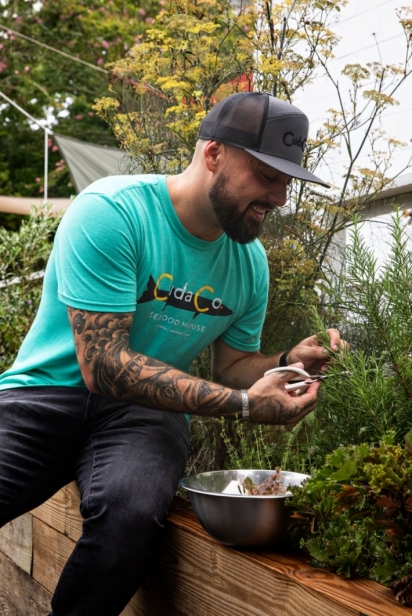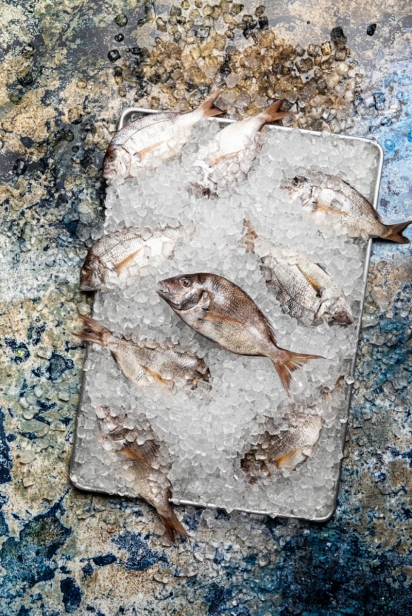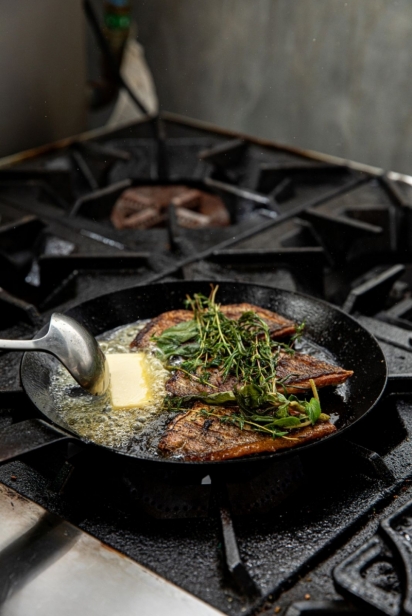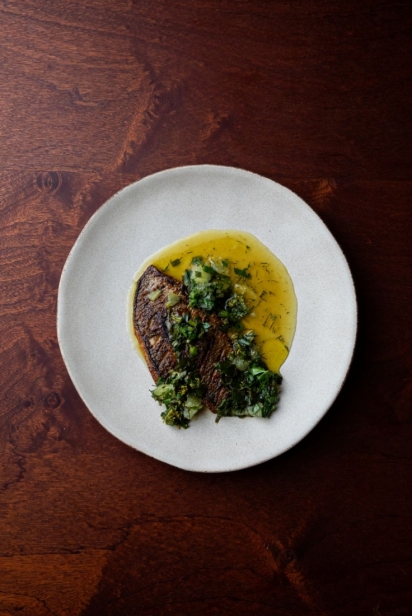How to: Buy Bycatch
Sustainability is a buzzword in food circles, but it can be a choppy sea to navigate for the unfamiliar, especially when it comes to seafood. Enter Shaun Brian Sells, chef and co-owner of CudaCo., a restaurant and fish market on James Island. Through smart sourcing and basic, fundamental cooking techniques, he transforms bycatch—fish previously tossed aside for other, more popular varieties such as grouper and snapper—into impeccable dishes. Here, he walks us through cooking one of his favorite bycatch buddies—porgy. Follow his tips (and stop by his market) and you’ll be cooking bycatch with confidence in no time.
WHAT YOU’LL NEED
Oil, fresh herbs, butter and citrus are all you really need to cook fresh fish. Keep the skin on one side of the fillet. If growing herbs is new to you, start with simple ones: Basil, lemon thyme, parsley and rosemary are easy to grow and pair nicely with everything. A fish spatula and fishweight are useful, too.
START HOT
You want to get your oil hot; take your freshly cut herbs and test the oil by dipping them quickly to the oil. Just touch the oil—don’t fully immerse them yet. If the oil sizzles, it is hot and you’re ready to start. I use a little bit more oil than a usual sauté when I'm sautéing the fish, so that it makes more contact with the skin.
APPLY PRESSURE
Place the fillet into the oil, skin side down, turn off the heat. Watch your heat here; you don’t want the pan to get too hot. Notice the skin starts to curl upon the edge. You’ll want to push down on the center of the fillet, or use a fish weight, so the fish will “relax” and the whole fillet makes contact with the surface of the sauté pan.
GO LOW & SLOW
Once the fish to relaxes, restart the heat and bring the temperature up slowly. When we cook fish, we primarily cook it low and slow. That makes it easy to see when it's done, because you can see it cooked through all the way. You're not going to burn the skin because of the low heat.
LIFT & FLIP
Cook every fish, but especially thin fillets, primarily on one side. Thinner fillets like porgy should cook until you see only a little bit of raw on the top side. The fish spatula comes in handy to release the fish; it helps you get under thin fillet without breaking the flesh. Use it to gently lift the edge of the fish—you don’t need to flip the fish to check for proper browning. You’ll know it’s ready when you see the skin start to curl. Once the fillet is almost curled all the way, then you flip it.
FINISH STRONG
As soon as you flip the fish, get your herbs in the hot oil and hit it with a little bit of butter.
This will release the herb oils and aromatics and infuse their flavor into the oil. Turn up the heat, and take a spoon and pull the frothing butter from the sauté pan over the fish and herbs. Plate the fillet, add citrus of your choice, and enjoy.














